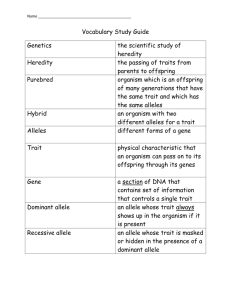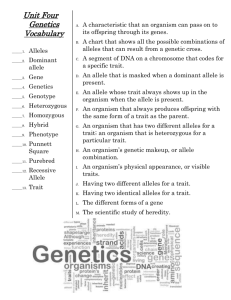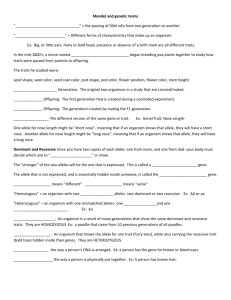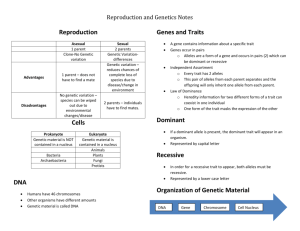Study Guide
advertisement
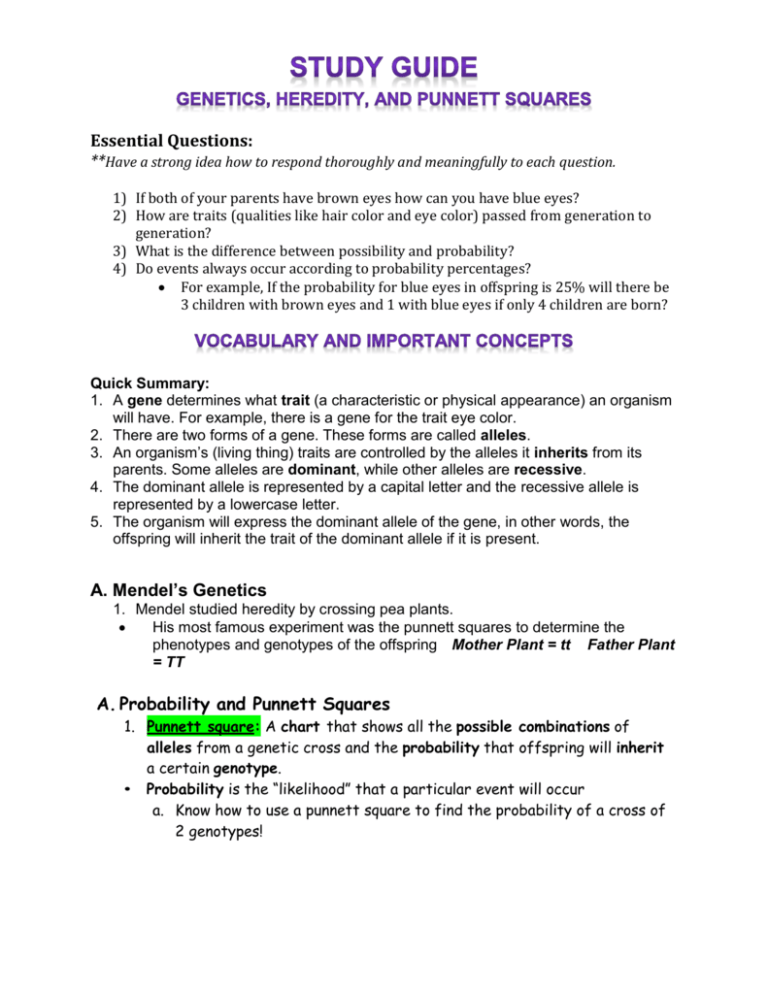
Essential Questions: **Have a strong idea how to respond thoroughly and meaningfully to each question. 1) If both of your parents have brown eyes how can you have blue eyes? 2) How are traits (qualities like hair color and eye color) passed from generation to generation? 3) What is the difference between possibility and probability? 4) Do events always occur according to probability percentages? For example, If the probability for blue eyes in offspring is 25% will there be 3 children with brown eyes and 1 with blue eyes if only 4 children are born? Quick Summary: 1. A gene determines what trait (a characteristic or physical appearance) an organism will have. For example, there is a gene for the trait eye color. 2. There are two forms of a gene. These forms are called alleles. 3. An organism’s (living thing) traits are controlled by the alleles it inherits from its parents. Some alleles are dominant, while other alleles are recessive. 4. The dominant allele is represented by a capital letter and the recessive allele is represented by a lowercase letter. 5. The organism will express the dominant allele of the gene, in other words, the offspring will inherit the trait of the dominant allele if it is present. A. Mendel’s Genetics 1. Mendel studied heredity by crossing pea plants. His most famous experiment was the punnett squares to determine the phenotypes and genotypes of the offspring Mother Plant = tt Father Plant = TT A. Probability and Punnett Squares 1. Punnett square: A chart that shows all the possible combinations of alleles from a genetic cross and the probability that offspring will inherit a certain genotype. • Probability is the “likelihood” that a particular event will occur a. Know how to use a punnett square to find the probability of a cross of 2 genotypes! Heredity: The passing of traits from parents to offspring. Trait: A characteristic that an organism can pass on to its offspring through its genes. Genetics: The scientific study of heredity (how genes and traits are passed from parents to offspring). Gene: The set of information that controls a trait; a segment of DNA on a chromosome that codes for a specific trait. Dominant allele: An allele whose trait always shows up in the organism when the allele is present. Recessive allele: An allele that does not show up when a dominant allele is present. Punnett square: A chart that shows all the possible combinations of alleles from a genetic cross. Phenotype: An organism’s physical appearance, or visible traits. Genotype: The alleles an organism has. For example, Bb or bb. Homozygous: Having two identical alleles for a trait. Heterozygous: Having two different alleles for a trait Fertilization: The process in which an egg cell and a sperm cell join to form a new organism. Codominance: A condition where neither of two alleles of a gene is dominant or recessive. For example, if a rooster is codominant for white and black feathers all alleles will be expressed in the phenotype.
